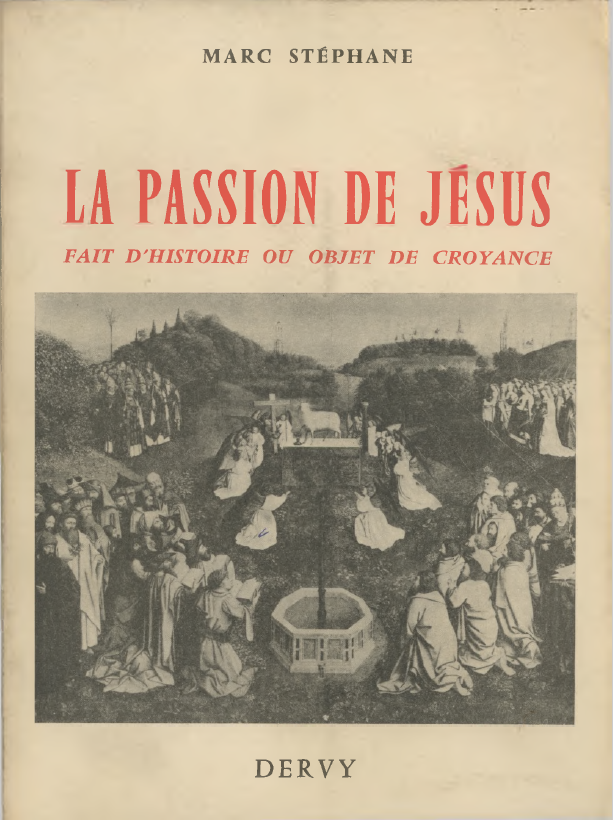
The French historian Marc Stéphane took up the question of the existence of Jesus and after engaging with the critical scholarship of his day, in particular that of “anti-mythicists” Alfred Loisy and Charles Guignebert, as well as mythicist Prosper Alfaric, and after delicately warning devout believers that he was not seeking to undermine their faith but was endeavouring to write an argument from a point of view that believers were free to ignore, wrote his own perspective on the question.
In brief, and to zero in on points I think are of more interest to many today, Stéphane
- Argued that the Gospel of Mark was the first to create a narrative of Jesus in a historical setting, drawing upon other writings such as the Jewish scriptures and the letters of Paul; fleshing out various images in these writings into narrative form;
- This gospel was probably written around the turn of the century, between 95 and 100 CE;
- Before the gospel was written, the view of the death of Jesus that was set out in 1 Cor 2:8 aligned with the same narrative we read in the Ascension of Isaiah: the Prince of this world, Satan and his archangels, killed the Lord of Glory and hung him up on a cross;
- The Ascension of Isaiah, in a Latin manuscript, conforms with the standard Jewish law that an executed criminal’s body would be hung on a tree as a public warning; that is, the hanging of a body on the tree an act that followed the execution; this was the standard Jewish understanding of what it meant for a body to be cursed by hanging on a tree;
- In one manuscript line of the Gospel of Mark Jesus is said to have called out at his moment of death, “My God, my God, why have you cursed me?” — thus adhering to what Paul wrote about the fate of the Son of God;
- The author of the Gospel of Mark had no historical material to shape into a narrative; there are many indications of this in the gospel itself (in addition to the evidence of source material from the Jewish scriptures and Paul’s letters): the lack of background and explanatory setting, characters and crowds just come and go as needed for each piece of story, the story is written in the style of a master narrator, breathlessly bringing his audience along with him “immediately” scene by vivid scene; the stylized structuring of three-fold sections throughout the narrative, especially with the 3rd, 6th and 9th hours of the Passion; and also the many anachronistic and unrealistic details of the narrative itself (e.g. Pharisees are portrayed unlike the sect they really were, and Pilate is also depicted most unlike his actual self);
- The author was writing for a Roman audience and decided to change the Jewish custom of hanging the body on a tree after death and place the crucifixion in a Roman setting: this further involved the need to have a Roman magistrate issue the final order for the crucifixion, and the name Pontius Pilate was well enough known and came conveniently to hand;
Seven points. I’ll stop there. Why spoil God’s design!
